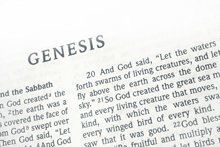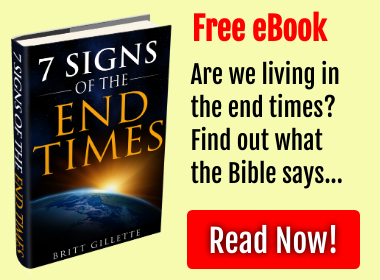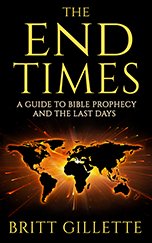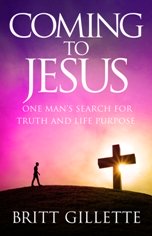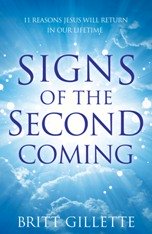 |
 |
|
|
Foreshadowing Jesus
Long before Jesus was born in Bethlehem, His arrival was announced in the Old Testament. In fact, Jesus Himself said, "You search the Scriptures because you think they give you eternal life. But the Scriptures point to me!" John 5:39 (NLT). He also said everything written about Himself in the law of Moses, the prophets, and the Psalms must be fulfilled (Luke 24:44). When you study the books of the Old Testament - books written hundreds of years before Jesus - you'll find this to be true. You'll find detailed and specific prophecies concerning the arrival of a Messiah, and you'll find all of them were fulfilled in the life of Jesus. These prophecies alone verify the identity of Jesus as the long-awaited Messiah. But bible prophecy isn't the only way you'll find the name of Jesus glorified in the Old Testament. Its stories, rituals, and miracles also point to His life, death, and resurrection. In fact, if you read through the Old Testament, you'll find Jesus everywhere. Don't believe me? Then let's take a look at just a few examples - Abraham's near sacrifice of Isaac, the story of Jonah, the Passover lamb, and the spring feasts. Abraham's Willingness to Sacrifice IsaacIn the first book of the Bible, recorded hundreds of years before Jesus, Abraham's faith is put to the test. God tells Abraham to take his only son, Isaac, to the land of Moriah and sacrifice him as a burnt offering (Genesis 22:2). Think about what Abraham went through. Can you imagine if God asked you to sacrifice your own child? I can't. In the end, God stopped Abraham and spared Isaac's life. But there's more to the story. God carried out this plan when it came to His own Son, Jesus. God gave Jesus as a living sacrifice, so that all who believe in Him will have eternal life (John 3:16). So God's request of Abraham - to sacrifice his only son - foreshadowed the crucifixion of Jesus. In fact, the Genesis account reveals that, while walking to the place of sacrifice, Abraham placed the wood for the burnt offering on Isaac's shoulders (Genesis 22:6) - the same wood earmarked to take his life. This too foreshadowed Jesus, who was forced to carry the cross to His own execution (John 19:17). The Story of JonahOver 700 years before the birth of Jesus, God spoke to a man named Jonah. He told Jonah to go to the City of Nineveh and pronounce God's judgment. But Jonah did the exact opposite, boarding a ship and setting off for another land. When the ship's crew realized what Jonah had done, they threw him overboard and a great fish swallowed him. Yet Jonah didn't die. He spent the next three days and three nights inside the fish (Jonah 1:1-17). Jonah's story foreshadowed the death and resurrection of Jesus. When the Pharisees demanded a miracle from Jesus, He told them, "The only sign I will give you is the sign of Jonah. For just as Jonah was in the belly of the great fish for three days and three nights, so will I be in the heart of the earth for three days and three nights" (Matthew 12:38-40). Jesus fulfilled this prophecy to the letter when He rose from the grave three days and three nights after His crucifixion (Luke 24:6-7). The Passover LambWhen the Israelites were enslaved by Pharaoh, God sent a plague of death to kill all the firstborn in Egypt. But God told the Israelites to slaughter a lamb and smear its blood around the doorframes of the houses where they would eat the animal (Exodus 12:6-7). In return, God promised to pass over the houses marked with blood, so the plague of death would not strike those households (Exodus 12:13). Every year since that night, the Jewish people have celebrated Passover in remembrance of what God did. Several centuries later, the meaning behind God's request became clear when He sent Jesus to serve as the ultimate sacrifice on our behalf. When John the Baptist saw Jesus, he said "Look! The Lamb of God who takes away the sin of the world!" (John 1:29). Jesus was the true Passover Lamb who purchased our freedom and granted forgiveness of our sins with His own blood (Ephesians 1:7). Just as no firstborn in Egypt could escape death without the blood of the lamb on his doorpost, no one on earth can experience forgiveness of sin without the blood of Jesus. Why? Because, according to the Law of Moses, without the shedding of blood, there can be no forgiveness (Hebrews 9:22). The Spring FeastsPaul said, "Don’t let anyone condemn you for not celebrating certain holy days, new moon ceremonies, or Sabbaths. For these rules are only shadows of the reality to come, and Jesus is that reality" (Colossians 2:16-17). Just as Jesus said, "The Scriptures point to me," Paul was saying all holy days and ceremonies point to Christ. In Leviticus 23, God requires the Israelites to observe seven holy feasts. While seemingly arbitrary in the days of Moses, we now know these feasts were prophetic in nature. The spring feasts foreshadowed His First Coming, and the fall feasts foreshadow His Second Coming. Since they've already been fulfilled, let's take a look at the spring feasts. Passover - We already covered how Jesus is the fulfillment of the Passover Lamb. Every year, the Jews are required to recognize Passover and celebrate it as a special festival to the Lord (Exodus 12:14). Yet these celebrations are simply shadows pointing to the true Passover which took place almost two thousand years ago. In fulfillment of the Passover feast, Jesus was crucified while the Passover lambs were being slaughtered in the Temple (John 19:14). As the Lamb of God, Jesus entered the Most Holy Place and secured our redemption forever with His own blood rather than the blood of animals (Hebrews 9:12). Also, during the crucifixion, the Roman soldiers saw Jesus was already dead, so they didn't break His legs (John 19:33). This fulfilled God's requirement for the Passover Lamb to be free of any broken bones (Exodus 12:46). The Feast of Unleavened Bread - The Feast of Unleavened Bread is to be celebrated for seven days following Passover, during which time all yeast must be removed from the home and no one is allowed to eat bread with yeast (Exodus 12:15). This feast foreshadowed Jesus and His sinless life, since Jesus is the bread of life (John 6:35), and He is without sin (1 Peter 2:22). Since yeast (a form of leaven) symbolizes sin and false teaching (1 Corinthians 5:6-7; Galatians 5:9), the Feast of Unleavened Bread represents the removal of sin from one's life. As the ultimate Passover Lamb (Revelation 5:12), Jesus was a lamb without spot or blemish (1 Peter 1:19) - a further requirement of the Passover lamb (Exodus 12:5). Unleavened bread symbolizes the sinless body of Jesus, given along with His blood as a sacrifice for the forgiveness of sins (Matthew 26:26). The Feast of First Fruits - As a celebration of the first harvest, God required the Israelites to observe the Feast of First Fruits on the day after the first Sabbath during the Feast of Unleavened Bread (Leviticus 23:9-14). The resurrection occurred on the Feast of First Fruits (the Sunday following Passover). So the Feast of First Fruits foreshadowed the resurrection of Jesus - the first fruit of a bountiful harvest of souls redeemed by the body and blood of Christ. Paul confirmed this when he said of Jesus, "He is the first in a great harvest of all who have died" (1 Corinthians 15:20). But if Christ is the first fruit, then something of great significance is implied. And what is that? It's this... If there's a first fruit, then there must be a second, a third, a forth, etc. Jesus was raised as the first of the harvest, but when He comes back, everyone who believes in Him will be raised as well (1 Corinthians 15:23). Pentecost - Fifty days after the Feast of First Fruits, God required the Israelites to celebrate the Festival of Harvest - a festival more widely known by its Greek translation, "Pentecost" (Leviticus 23:15-22). It was on this day when God gave the Holy Spirit to believers (Acts 2:1-13). Jesus promised the Holy Spirit would come to live within those who believe in Him (John 14:16-17), and Paul said you will receive the Holy Spirit at the moment you believe the Good News about Jesus (Galatians 3:5). Pentecost celebrates the great soul harvest brought about by the crucifixion and resurrection. As Jesus said, "The harvesters are paid good wages, and the fruit they harvest is people brought to eternal life" John 4:36 (NLT). ConclusionThe parallels between these Old Testament rituals and stories are more than a mere coincidence. When taken together with other examples of Old Testament symbolism and the fulfilled Messianic prophecies, they provide further verification of the Bible as the inspired Word of God. Most important, they serve to glorify the name of Jesus. So pray to God for further understanding of His Word, and let the Holy Spirit reveal this truth to you - the Old Testament is all about Jesus. Britt Gillette is the founder of End Times Bible Prophecy and the author of multiple books. Receive his book 7 Signs of the End Times for FREE when you sign up for his free Substack. Return to the top of Foreshadowing Jesus Return to the End Times Bible Prophecy Website Homepage
|
Now Available! |
|
Search This SiteEnd Times TopicsBible ProphecyTechnologyAdditional TopicsArticle ArchiveAbout ETBPWe're Now on Substack!
|
||
|
| ||
